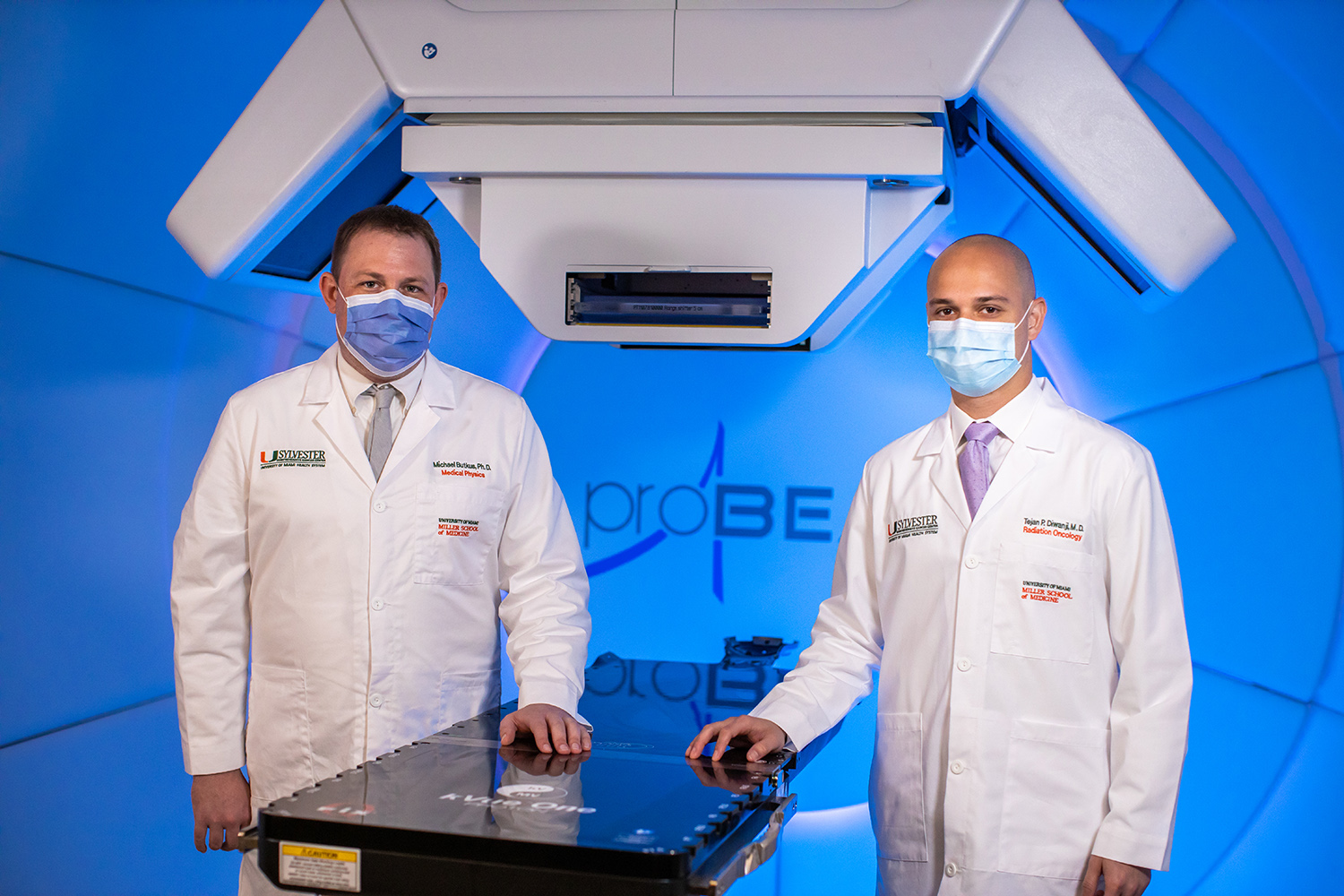In September 2020, the only proton treatment center in Florida located at an NCI-designated cancer center opened at Sylvester.
The Dwoskin Proton Therapy Center, located behind UHealth Tower in Miami’s health district, is named after Steven Dwoskin for his generous gift to support cancer research at Sylvester and the new cutting-edge facility.
“Our team of experts and the clinical trials we are able to offer, because of our National Cancer Institute designation, give us unmatched opportunities to make a difference – the Sylvester difference,” said Stephen D. Nimer, M.D., director of Sylvester. “Proton therapy is an important component of the innovative treatments available to our adult and pediatric cancer patients.”
At two-thirds the speed of light, the proton beam enters the body with a low radiation dose that can be programmed to stop within the tumor. This can result in decreased intensity and frequency of adverse effects compared with radiation that uses x-rays, which are less precise and can penetrate normal structures as they exit the body.
“Protons have unique attributes which in some cases will allow for less radiation dose to healthy tissues and organs surrounding the cancer being targeted,” said Alan Pollack, M.D., Ph.D., chair of radiation oncology and interim deputy director of Sylvester. “When the radiation dose to normal structures can be reduced, there can be meaningful reduction of side effects later.”
Sylvester has a renowned team of radiation oncologists, medical physicists, and radiation biologists led by Dr. Pollack. These experts have the knowledge and experience to determine which patients may benefit from treatment with protons. The Sylvester team approach is an essential part of the evaluation process and the generation of a treatment plan.

Michael Butkus, Ph.D., and Tejan Diwanji, M.D., are the co-directors of Sylvester’s proton program. “Proton therapy is an incredibly intricate and complex treatment that requires expertise at every level to design an individualized treatment plan for each patient,” said Dr. Butkus, a medical physicist, who works with the radiation oncologist to plan a patient’s treatment. “We calculate and adjust how the proton beam delivers the appropriate dose to the tumor.”
“The team at the Dwoskin Proton Therapy Center will guide you through every step of your journey from a planning CT-scan to designing custom devices that enhance the accuracy and precision of treatment, to the planning and delivery of each treatment, which can span several weeks,” explained Dr. Diwanji, a radiation oncologist.
It took a little over two years to get Sylvester’s proton program off the ground and into the patient treatment phase.
In April 2018, ground was broken for the new building, and by February 2019, the Linbeck Construction Group had completed the shell. With 6,000 cubic yards of concrete, this is no ordinary structure. The separation wall between the radiation source and the gantry which houses the treatment equipment is 16 feet thick.
The cyclotron, which is the particle accelerator, was delivered and installed by Varian in July 2019. Crews transported it from Europe and a crane lifted the cyclotron off a truck and placed it in the building through an opening in the roof. This is the part of the machine that makes the protons move at a speed of 100,000 miles per second in order to destroy a tumor.
“Proton therapy is a new and exciting addition to Sylvester’s commitment to using cutting-edge technology and research to improve patient outcomes and reduce complications,” said Dr. Pollack. “We’re thrilled to offer this at our brand new state-of-the-science facility, the Dwoksin Proton Therapy Center.”